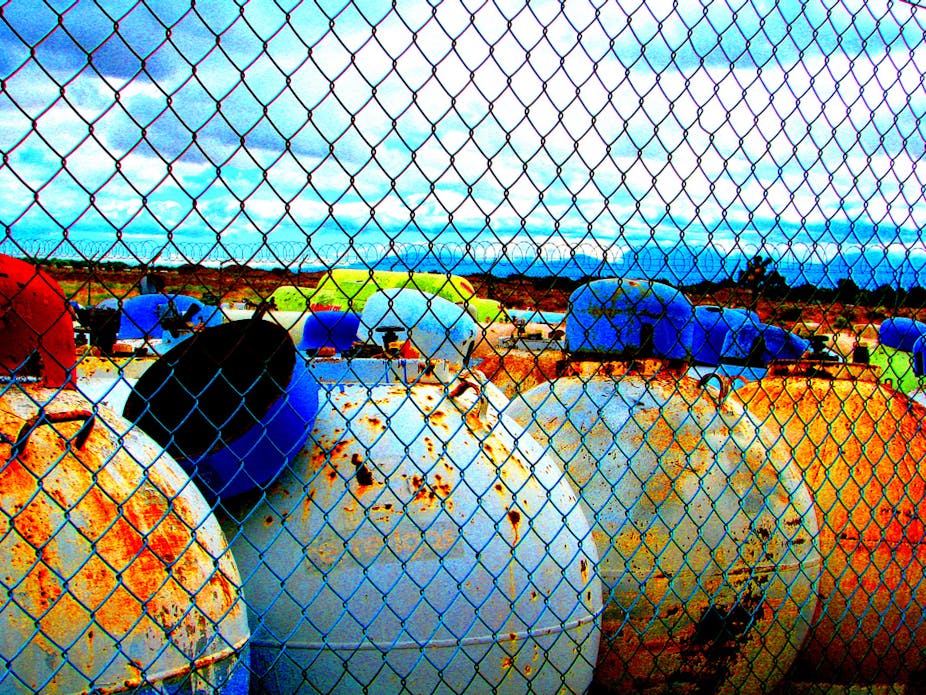Converting renewable energy into electricity is one thing; converting it into fuel is quite another. The vast majority of global energy demand is for fuel, and a renewable source could help us heat our houses and travel efficiently long into the future. It might even mean we could avoid the conflicts that will arise while competing for the last remaining fossil fuels.
Today, we are a step further towards this goal after engineering the gut bacteria E. coli, most famous for the strain of it that causes food poisoning, to make it generate renewable propane. My colleagues and I detail our work in a study published in the journal Nature Communications.
Scientific advances now mean we can make microbes churn out useful energy, by changing the way they process energy. These microbes can then convert the “renewable” sunlight (and carbon dioxide) into fuel, either directly or using sugar as an intermediate stop-over.
Why propane?
Although the technology for renewable conversion of solar energy into electricity already works well, this isn’t quite the same as being “renewable energy”. Approximately 85% of total energy demand is actually for fuels, as it is far easier to store energy in fuel rather than as electricity.
Industrial scale production of cheap renewable fuel therefore runs into a big problem. It needs to out-compete fossil fuels – an alternative technology that only needs to pump out the ready product.
In searching for a renewable fuel process that could be economically sustainable we focused on propane, a bulk component of liquid petroleum gas. Propane is an attractive target for several reasons.
It’s a gas, which means you could immediately separate the finished product. The microbes who produced the propane would be left behind and the new fuel will escape as a gas. No need for a messy separation.
That said, propane also requires little energy to liquefy, thereby enabling the high-energy density storage that is required for cost-effective usage. There’s a reason your car’s gas tank is actually full of liquid – gas simply takes up too much room.
The fact propane is already in commercial use also helps. It’s used as a fuel in rural areas or in industry, and sometimes also for transport. In Italy, for example, thousands of stations sell propane-containing mixtures under the label “Autogas”.
Making renewable propane
You can’t make renewable propane through natural reactions – no organisms naturally pump out propane in the way humans breathe out CO2 or trees exhale oxygen. We therefore turned to synthetic biology, where biology meets engineering, in order to create such a capability.

We chose E. coli because it is easy to engineer. Left to its own devices, E. coli takes glucose from its surroundings and breaks it down into smaller carbon molecules, electrons and “internal” chemical energy. These smaller parts are used only as building blocks for cellular growth – to reproduce.
In the engineered cells, however, we hijack the assembly line for one of those building blocks known as “fatty acid synthesis”. Fatty acids are normally synthesised mainly in order to generate cell membranes but, by introducing a special enzyme, we can redirect it to instead release butyric acid, the precursor for propane.
From there, only two more enzymes were needed in order to convert this smelly fatty acid into propane. All in all, this was achieved by introducing only five genes — a very, very tiny fraction of the more than 4,000 genes present in the entire genome of E. coli.
Our work represents a proof-of-concept for renewable fuel development as we deliberately selected a process that considers all steps of the pathway from production to utilisation. All in order to maximise chances of commercial production.
At the end of the day, that is what is most important – to enable sustainable and renewable conversion of sunlight and CO2 into fuel, with minimal impact on the environment.

